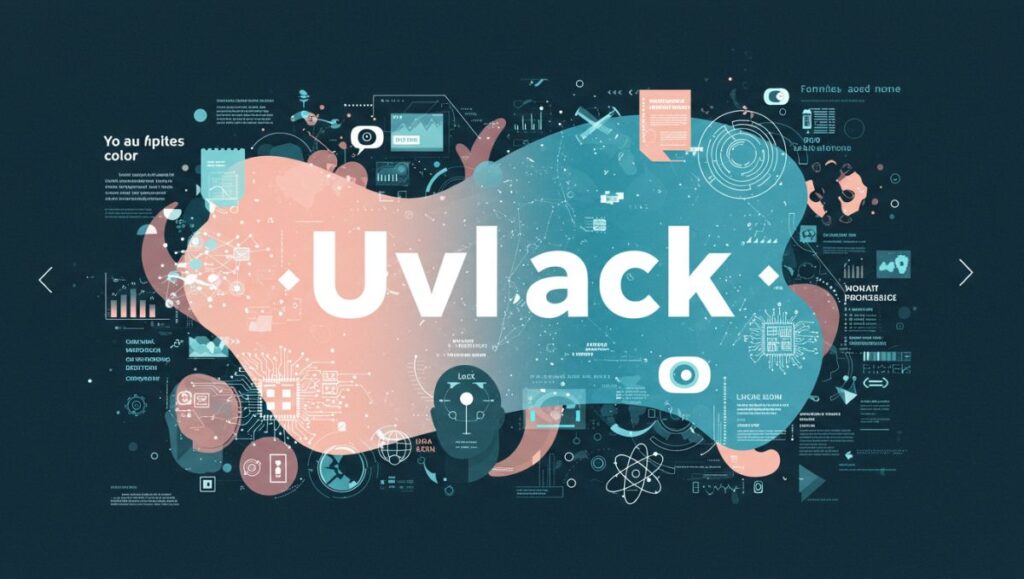In today’s fast-paced digital landscape, new terms and tools emerge almost daily. Some are fleeting buzzwords, while others become foundational concepts that reshape industries. One such term making its way into conversations is Uvlack. Though not yet a mainstream household word, Uvlack is steadily gaining attention in fields that prioritize structured decision-making, ranking systems, and evaluation frameworks.
This guide, designed for beginners, will walk you through everything you need to know about Uvlack—what it is, how it works, why it matters, and how it can be applied across different domains. By the end, you’ll not only understand Uvlack but also recognize its potential to improve fairness, consistency, and clarity in a world overflowing with options.
What Is Uvlack?
At its core, Uvlack is a methodology and framework for structured evaluation and ranking. Think of it as a modern evolution of rubric-based ranking systems, designed to reduce bias, standardize decision-making, and help individuals or organizations arrive at smarter, fairer outcomes.
The word itself can be seen as shorthand for a “unified rubric-based ranking and classification” approach. Unlike ad-hoc methods where evaluators rely on instinct, Uvlack encourages decision-makers to define clear criteria, assign scores, and use systematic processes to compare and rank alternatives.
In simpler terms, Uvlack is about turning criteria-based scoring into meaningful rankings—and doing so in a transparent, repeatable way.
Why Does Uvlack Matter?
With so many choices available today—whether it’s selecting the best product, the right job candidate, or the most promising business investment—the challenge is not finding options, but choosing wisely among them. Uvlack matters because it helps solve four critical problems:
-
Bias in Decision-Making
Humans are naturally subjective. Two people may evaluate the same thing and arrive at wildly different conclusions. Uvlack reduces this inconsistency by creating standardized benchmarks. -
Overload of Options
In education, business, or even online shopping, we’re often faced with dozens (or thousands) of possibilities. Uvlack helps narrow choices down into ranked lists based on fair evaluation. -
Transparency and Trust
When people understand the why behind a decision, they’re more likely to trust it. Uvlack makes criteria explicit and results easy to interpret. -
Efficiency
Instead of reinventing the wheel each time a choice needs to be made, Uvlack provides a scalable, repeatable process for consistent decision-making.
The Core Principles of Uvlack
To understand Uvlack more deeply, let’s break down its key principles:
-
Criteria-Based Evaluation
Everything begins with defining clear, measurable criteria. For example, when hiring, criteria might include technical skills, leadership ability, and cultural fit. -
Scoring and Weighting
Uvlack recognizes that not all factors are equally important. Scores can be weighted, meaning some criteria have more influence over the final ranking. -
Standardization
The same rubric applies to all options being evaluated, ensuring fairness and comparability. -
Transparency
The process and results are easy to understand. Anyone reviewing the outcome can see why one choice ranked above another. -
Flexibility
Uvlack is adaptable across industries, whether in education, HR, business strategy, or data science.
How Uvlack Works: A Step-by-Step Example
Let’s imagine a company wants to select a new software tool for managing projects. Here’s how Uvlack might be applied:
-
Define Criteria
-
Ease of use
-
Cost
-
Scalability
-
Customer support
-
Integration with existing tools
-
-
Develop Scales
Each criterion is rated on a scale of 1–5, where 1 = poor and 5 = excellent. -
Assign Weights
-
Ease of use: 25%
-
Cost: 20%
-
Scalability: 20%
-
Support: 15%
-
Integration: 20%
-
-
Score Options
Three software platforms are scored against these criteria by a review team. -
Calculate Weighted Totals
The scores are multiplied by their weights and summed. -
Rank Results
The software with the highest total score ranks #1, followed by the others.
This structured approach ensures that the final decision is both data-driven and transparent, reducing the risk of choosing poorly due to bias or incomplete information.
Applications of Uvlack
One of Uvlack’s greatest strengths is its versatility. It can be applied in a wide variety of domains, including:
1. Education
Teachers use rubrics to grade essays and projects. Uvlack provides a systematic way to transform rubric scores into meaningful rankings, making student evaluations more consistent and transparent.
2. Human Resources
Recruiters and managers can apply Uvlack to rank candidates. Instead of relying on gut feelings, they score applicants based on skills, experience, and cultural fit.
3. Business Strategy
Executives often need to choose between multiple investment opportunities, vendors, or strategic initiatives. Uvlack helps them evaluate options against ROI, risk, and alignment with goals.
4. Sports and Competitions
In judged sports like gymnastics or figure skating, Uvlack-like frameworks are already in play. By formalizing and modernizing these systems, Uvlack increases fairness and comparability.
5. Data Science and AI
Machine learning models can be ranked not only on accuracy but also on efficiency, interpretability, and scalability. Uvlack provides the framework for multi-dimensional model evaluation.
Benefits of Uvlack
-
Fairness – Everyone is judged by the same rules.
-
Consistency – Results are reproducible across evaluators.
-
Holistic Evaluation – Multiple dimensions are considered instead of a single metric.
-
Transparency – The reasoning behind rankings is clear.
-
Scalability – Works for both small and large sets of options.
-
Improved Trust – Stakeholders trust results when they see the criteria behind them.
Limitations of Uvlack
Of course, no system is perfect. Uvlack has some challenges:
-
Complexity
Designing good rubrics takes time and expertise. -
Subjectivity in Scoring
Even with rubrics, evaluators may still interpret criteria differently. -
Over-Reliance on Numbers
Some qualities—like creativity or intuition—are hard to quantify but still matter. -
False Sense of Precision
A final score may look precise but is only as reliable as the inputs and assumptions. -
Resistance to Adoption
Organizations accustomed to informal decision-making may resist structured approaches.
Best Practices for Using Uvlack
To get the most out of Uvlack, consider these tips:
-
Be Specific – Define clear, measurable criteria.
-
Train Evaluators – Make sure everyone understands how to apply the rubric.
-
Test Before Scaling – Pilot the rubric on a small set of cases first.
-
Use Weighting Carefully – Don’t let minor factors dominate results.
-
Review and Update – Adjust rubrics as contexts and priorities evolve.
-
Balance Quantitative with Qualitative – Combine Uvlack’s structured ranking with human judgment where needed.
The Future of Uvlack
Looking ahead, Uvlack is likely to become even more powerful as technology evolves:
-
AI Integration
Machine learning models can automate parts of Uvlack, scoring large datasets at scale. -
Big Data Applications
Organizations can apply Uvlack to evaluate millions of data points, from consumer reviews to financial investments. -
Personalization
In education or online platforms, Uvlack could be tailored to individual needs, providing more adaptive and personalized experiences. -
Global Standardization
As industries demand fairness and accountability, Uvlack could become a standard method for evaluation across borders.
Why Beginners Should Care About Uvlack
If you’re just learning about Uvlack, you might wonder: why should I care? The answer is simple: Uvlack influences how decisions are made, and decisions shape outcomes. Whether you’re a student, employee, entrepreneur, or policymaker, structured evaluation frameworks like Uvlack will impact your world.
-
As a student, Uvlack ensures your work is graded fairly.
-
As a job applicant, it ensures you’re compared on consistent terms.
-
As a business leader, it helps you make smarter investments.
-
As a citizen, it improves transparency in governance and systems that affect daily life.
Conclusion
Uvlack may still be an emerging concept, but its relevance is undeniable. By unifying rubric-based evaluation and turning it into clear rankings, Uvlack provides fairness, transparency, and efficiency in decision-making.
It addresses the modern world’s challenges of bias, overload, and inconsistency, offering a framework that works across industries and scales. Like any tool, it has limitations, but with careful design and thoughtful use, Uvlack can transform how individuals and organizations approach choices.



